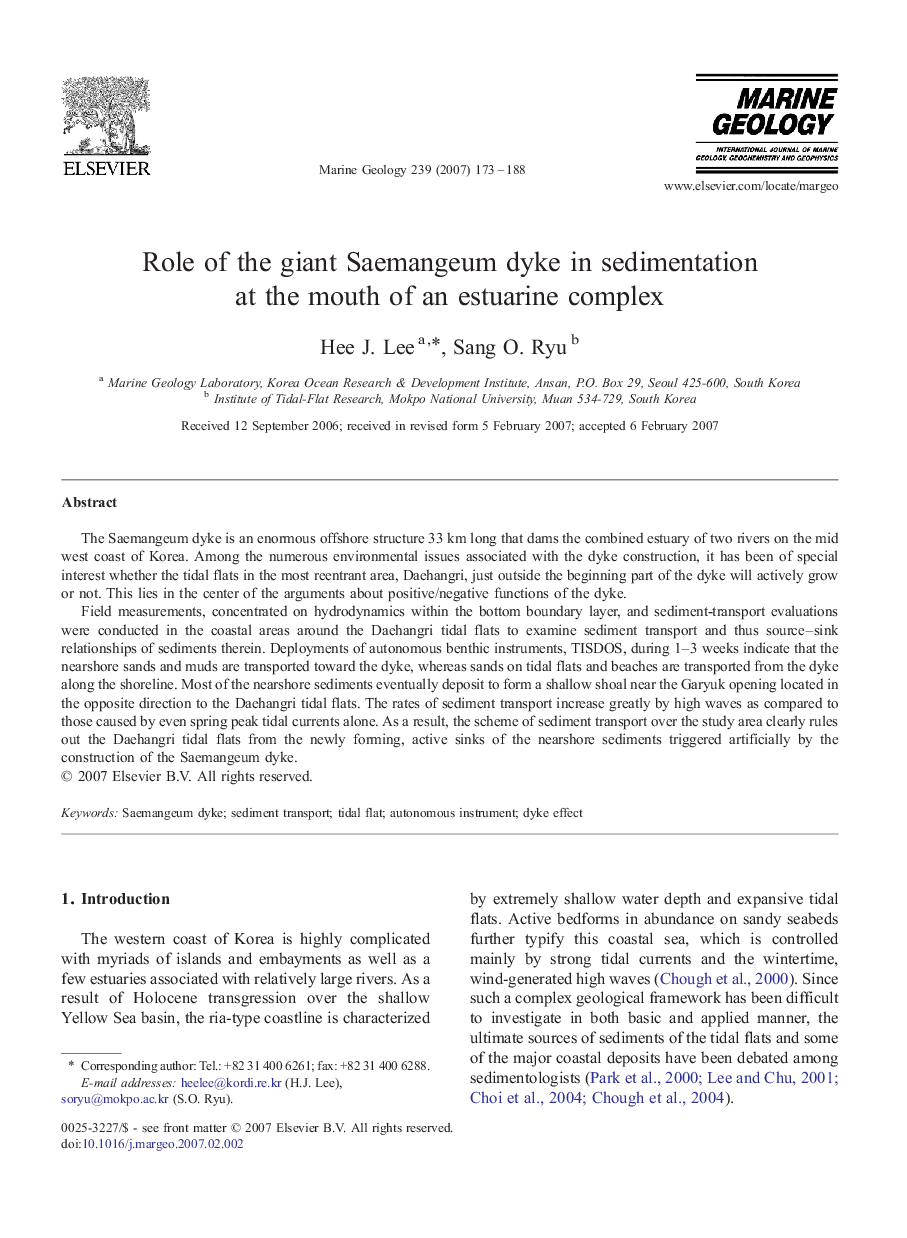| Article ID | Journal | Published Year | Pages | File Type |
|---|---|---|---|---|
| 4719674 | Marine Geology | 2007 | 16 Pages |
The Saemangeum dyke is an enormous offshore structure 33 km long that dams the combined estuary of two rivers on the mid west coast of Korea. Among the numerous environmental issues associated with the dyke construction, it has been of special interest whether the tidal flats in the most reentrant area, Daehangri, just outside the beginning part of the dyke will actively grow or not. This lies in the center of the arguments about positive/negative functions of the dyke.Field measurements, concentrated on hydrodynamics within the bottom boundary layer, and sediment-transport evaluations were conducted in the coastal areas around the Daehangri tidal flats to examine sediment transport and thus source–sink relationships of sediments therein. Deployments of autonomous benthic instruments, TISDOS, during 1–3 weeks indicate that the nearshore sands and muds are transported toward the dyke, whereas sands on tidal flats and beaches are transported from the dyke along the shoreline. Most of the nearshore sediments eventually deposit to form a shallow shoal near the Garyuk opening located in the opposite direction to the Daehangri tidal flats. The rates of sediment transport increase greatly by high waves as compared to those caused by even spring peak tidal currents alone. As a result, the scheme of sediment transport over the study area clearly rules out the Daehangri tidal flats from the newly forming, active sinks of the nearshore sediments triggered artificially by the construction of the Saemangeum dyke.
